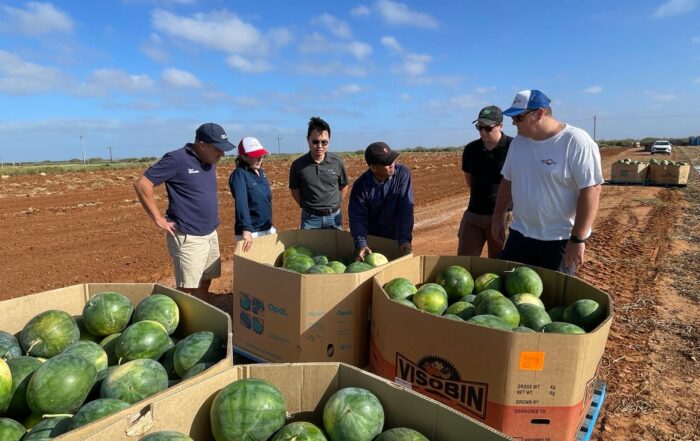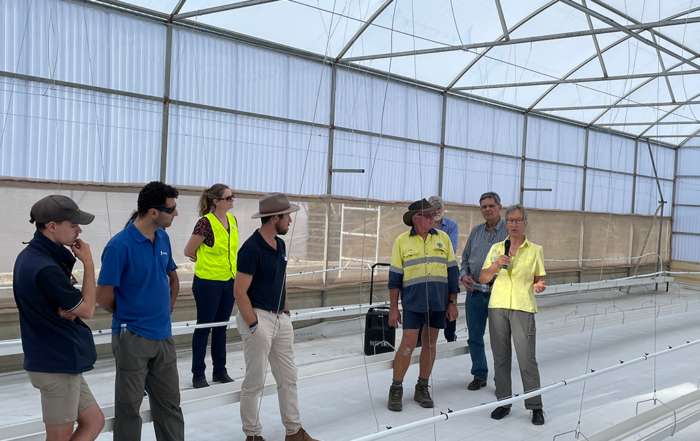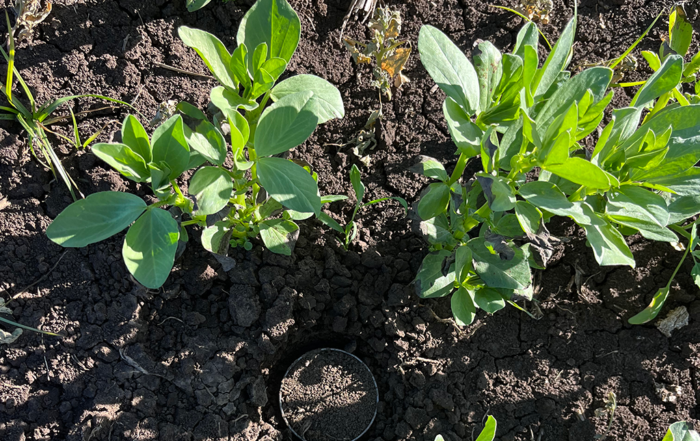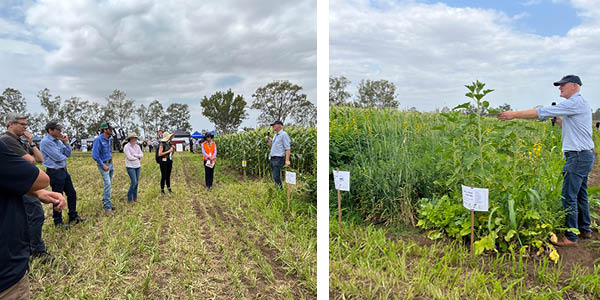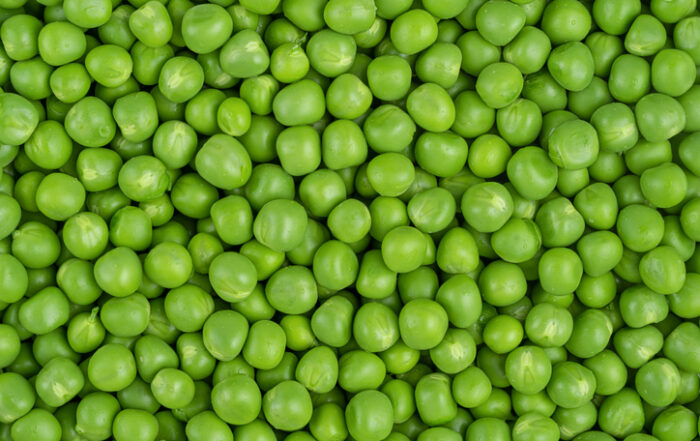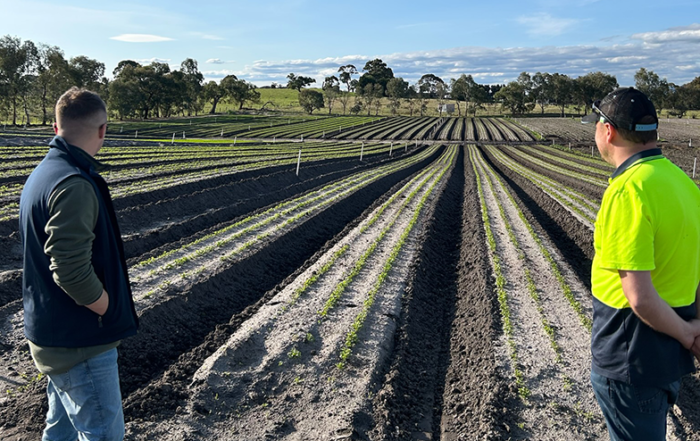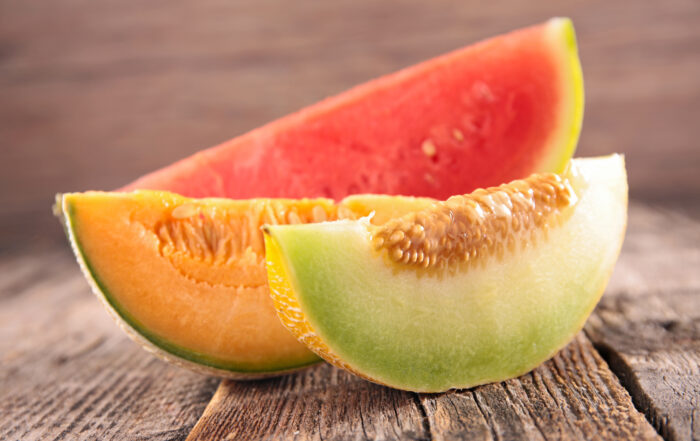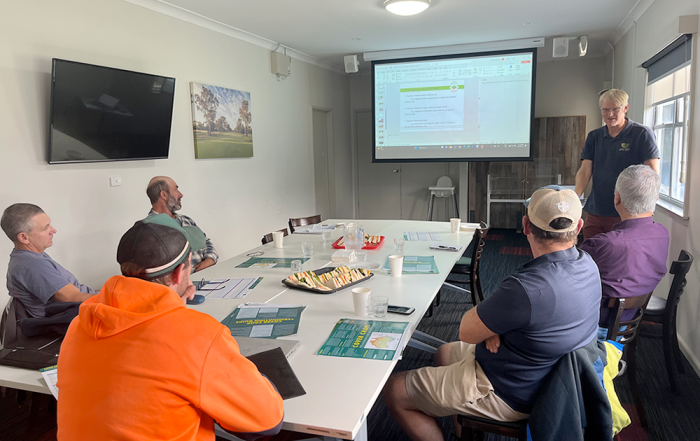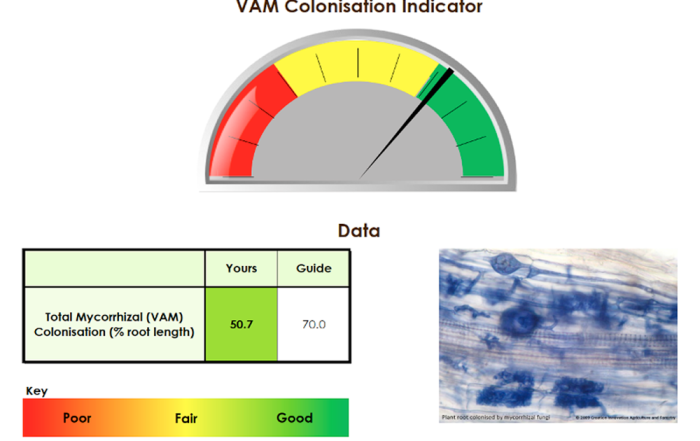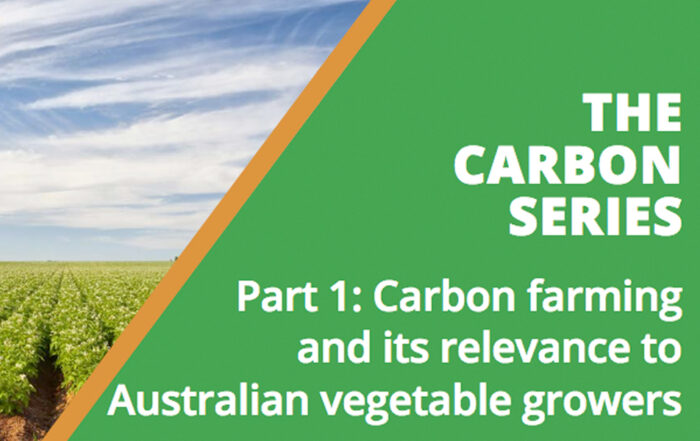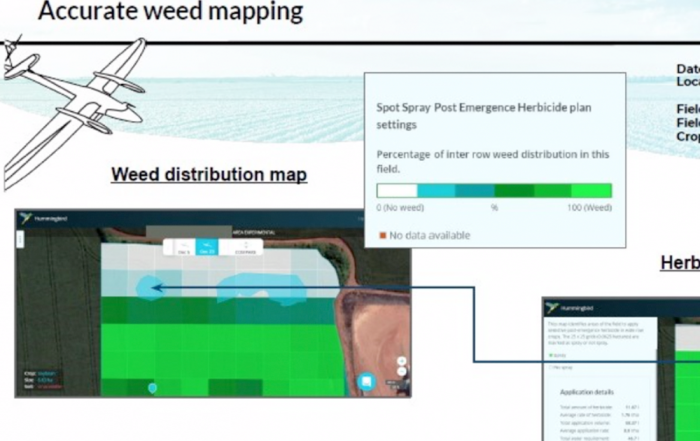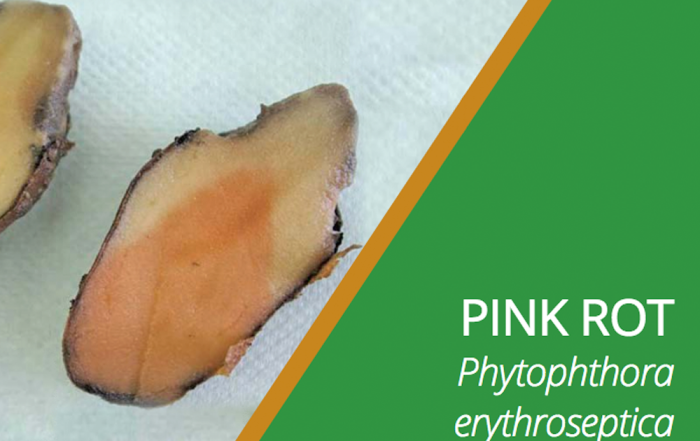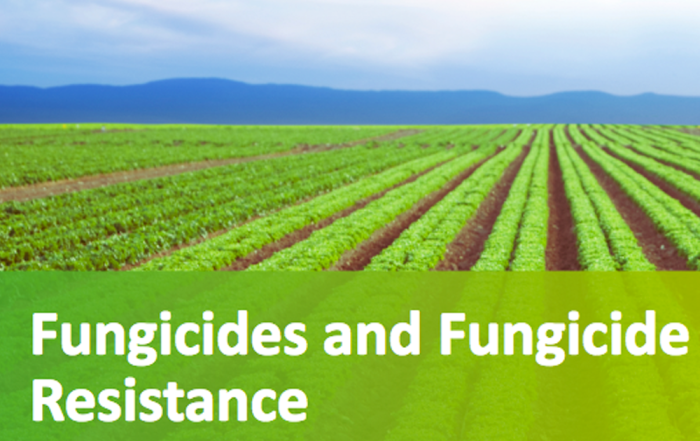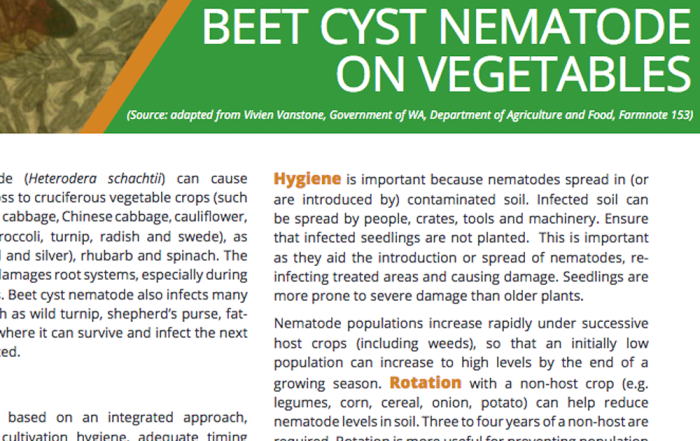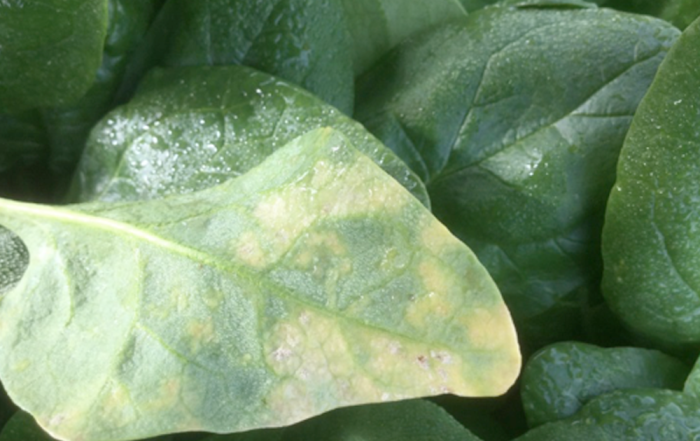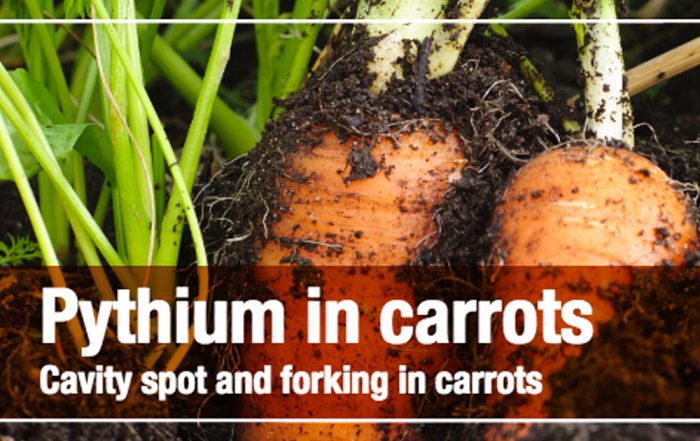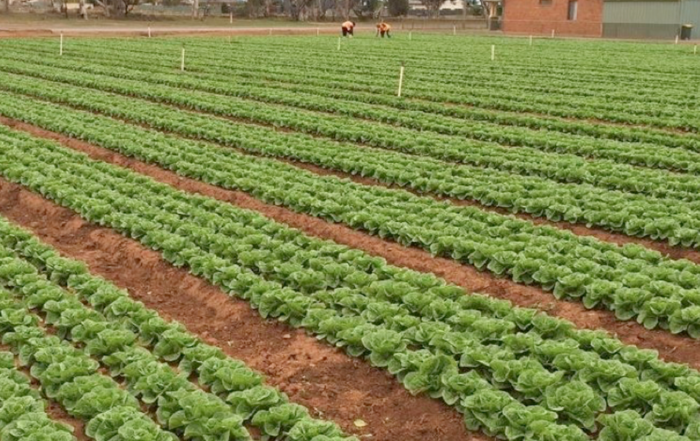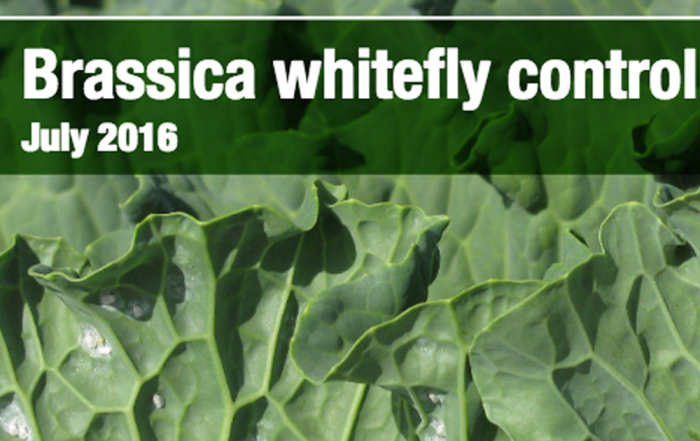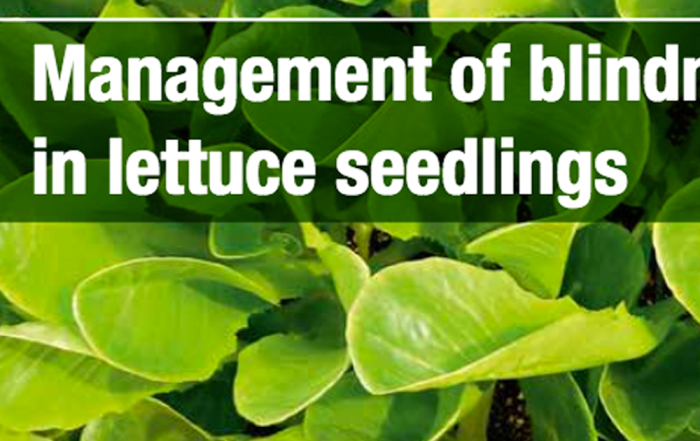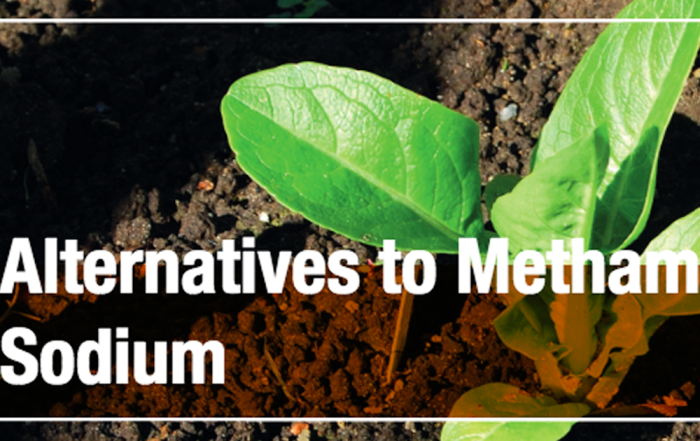Optimising nitrogen supply to sweet corn using legume cover crops – a case study from the Mulgowie demonstration site in Qld
The Mulgowie Farming Company, a family-owned producer of sweet corn and green beans, is known for its commitment to sustainable farming practices. Based in Mulgowie, Lockyer Valley, Queensland, the company teamed up with Soil Wealth ICP to explore whether legume cover crops could effectively supply nitrogen to sweet corn. This trial, conducted on a 16-hectare paddock of black clay cracking soils, assessed how legume cover crops could be used to optimise nitrogen availability to a sweet corn crop. Trial setup The aim of the trial was to determine whether a legume cover crop, specifically faba beans, could meet the nitrogen...
Optimising nitrogen supply to sweet corn using legume cover crops – a case study from the Mulgowie demonstration site in Qld
The Mulgowie Farming Company, a family-owned producer of sweet corn and green beans, is known for its commitment to sustainable farming practices. Based in Mulgowie, Lockyer Valley, Queensland, the company teamed up with Soil Wealth...
Soil Wealth ICP international study tour to New Zealand
Soil Wealth ICP team members, Dr Doris Blaesing and Sophia Thach, guided a group of eager growers, agronomists, and industry partners on the Soil Wealth ICP International Study Tour in New Zealand. Over five days,...
Soil Wealth ICP team member joins melons study tour to the US
Soil Wealth ICP team member, Umberto Calvo, recently participated in a study tour of the US melon industry, alongside a group of Australian growers, supply chain operators, and research providers. Organised by Melons Australia, the...
Minimum till and innovation key to maintaining soil carbon
Soil carbon refers to the measure of carbon contained within soil organic matter, which is around 50% on average. It plays a key role in soil health. Vegetable growers can maintain or...
Soil management in the tropics: New melon demo site in Mataranka, NT
Farming in tropical climates presents a unique set of challenges, especially when dealing with sandy soils. These soils, likened to an open hydroponic system due to the water and nutrient management strategies they require, pose...
Demonstration site collaboration promotes sustainable farming practices in NSW
In an exciting new collaboration, local growers in the Sydney Basin area of New South Wales are set to benefit from cover cropping and soil health practices. The project, a partnership between Soil Wealth ICP...
Demonstrating efficient irrigation and nutrition practices in capsicum cultivation
Bundaberg, in Queensland’s Wide Bay-Burnett, is one of the main outdoor capsicum growing regions in Australia. With high input costs significantly impacting profit margins, growers are interested in exploring solutions to improve efficiencies in input...
Soil Wealth ICP panel navigates the road to resilience
The key success factors for growers to plan ahead, understand their risks and improve their resilience were highlighted in a Soil Wealth ICP panel discussion at the Annual Vegetable Industry Seminar (AVIS) on 3 June,...
Sustainable soil management workshop
Earlier this year, the Soil Wealth ICP, PotatoLink, and VegNET teams collaborated to bring an event to Queensland’s Wide Bay-Burnett region, highlighting the benefits of sustainable soil management. Growers met near Bundaberg for an afternoon...
Building resilience against extreme wet weather
Growers and agronomists recently met at two special events in Bathurst and Cowra, aimed at strengthening the resilience and biosecurity measures in vegetable growing. Bathurst: The use of cover crops and reduced tillage to build...
Melon Roadshow 2024 – Northern Australia
The latest Melon Roadshow went north, visiting growers in the vast landscapes of tropical north Queensland, Kununurra in Western Australia and Katherine in the Northern Territory. Umberto Calvo from the Soil Wealth ICP team joined...
Using cover crops to improve soil health and suppress disease in the Northern Territory
The Soil Wealth ICP team is excited to work with grower Kevin Hoang in Marrakai on a newly established demonstration site in the Northern Territory. Kevin is eager to get more out of his land...
Mastering soil-borne diseases in Adelaide
The two-day Soil Wealth ICP Soil-Borne Disease Masterclass was held in Adelaide from May 8-9 with a targeted focus on vegetable and onion growers, advisors and industry members. The masterclass was delivered by a team...
Tarwin, Vic demo site update: Why is soil carbon important?
Soil carbon refers to the measure of carbon contained within soil organic matter, which is around 50% on average. It plays a key role in soil health. Vegetable growers can maintain or build soil carbon...
Cover crops part of the carbon story in Victoria
Our Tarwin demonstration site in South Gippsland, Victoria is focused on maintaining soil carbon in a clay loam greenfield site which is gradually being converted from pasture to a vegetable production system rotation (predominantly celery,...
Promoting soil health at WA melons roadshow
Soil Wealth ICP team member Umberto Calvo joined a team of experts on the recent melons roadshow in Western Australia. The roadshow, organised by Melons Australia and funded through the Hort Innovation Melon Fund, visited...
Beneficials flock to IPM demo site
A greenhouse capsicum producer in South Australia’s Northern Adelaide Plains is hosting a Soil Wealth ICP demonstration trial across two production sites. To support their integrated pest management (IPM) program, native insectaries were planted along...
Adapt, innovate, automate – Soil Wealth ICP team heads west
Doris Blaesing and Carl Larsen (RMCG) from the Soil Wealth ICP team were in Western Australia last week for several farm visits, events and industry meetings, in addition to scoping a potential new combined vegetable...
Trials underway at the Mildura demonstration site
Addressing industry concerns about reducing plastic and embracing sustainable practices, the first trial at the melon demonstration site in Mildura is underway and focusing on the use of barley straw as an alternative to plastic...
Adding nitrogen with legumes in vegetable crops: update from the Mulgowie demonstration site
As the costs of inputs continue to bite, growers are increasingly turning towards organic alternatives to meet the nitrogen demands of their vegetable crops. The Soil Wealth ICP team together with Mulgowie Farms in the...
Visualising Australasia’s Soils (VAS): Supporting agriculture through data collaboration
Visualising Australasia's Soils (VAS) – a research initiative from the Soil CRC – will provide a virtual window into the rich diversity of soils across Australia and New Zealand. More than a data repository,...
Celebrating World Soil Day at our demo sites
World Soil Day is held annually on 5 December to highlight the importance of healthy soil and to advocate for the sustainable management of soil resources. Building and maintaining healthy soils is at the...
NSW’s Riverina to host second melon demo site
Rombola Family Farms in Griffith, New South Wales, has become the second melon demonstration site for the Soil Wealth ICP project. The farm produces rockmelons, watermelons and honeydew melons in the fertile Riverina region. This...
Harnessing the power of cover crops for enhanced soil health
At the Gatton AgTech showcase in Queensland’s Lockyer Valley, Dr Kelvin Montagu, Dr Doris Blaesing, and Steph Tabone showcased a Soil Wealth ICP cover crop trial, hosting two field walks under the theme Making the most...
Native insectaries planted at Virginia, SA
The new Soil Wealth ICP demonstration site at Virginia in the Northern Adelaide Plains is off and running with native insectary sites planted on 19 October. The trial aims to attract predators of greenhouse vegetable...
Mildura makes way for melon demo site
The Soil Wealth ICP team has started to set up the first melon demonstration site for the project, hosted by Dawson Melon Co. in Red Cliffs, Victoria. The first trial will focus on the use...
Northern Adelaide Plains to host Soil Wealth ICP demo sites
Soil Wealth ICP team members Dr Doris Blaesing and Camilla Humphries will be working with integrated pest management (IPM) specialist contractor Jessica Bamford in South Australia's Northern Adelaide Plains to set up two IPM insectary...
The Onion Project: Nutrient management for onions in Australia
This nutrient management guide is designed for onion growers and crop advisors who aim to produce high-quality crops without wasting nutrients. It covers: An overview of onion growth and nutrient needs Information on onion...
Soil Wealth ICP grower panel discussion – 2023 Annual Vegetable Industry Seminar
Ahead of Hort Connections 2023, Australian vegetable growers heard how their peers have worked with the Soil Wealth ICP project to improve their productivity, profitability and sustainability in field trials to boost soil...
Pea production in focus at new Tas demo site
A new Soil Wealth ICP vegetable demonstration site has been confirmed in Tasmania’s Midlands. Hosted by Simplot Australia, the Soil Wealth ICP team will work closely with Simplot agronomists and VegNET Tasmania to establish how...
Nutrition nous key to productive crops in Skye, Victoria
Our Skye demonstration site at Butler Market Gardens in Victoria will give more “oomph” to sandy loam soils south-east of Melbourne through smart nutrient management. Parsley was recently planted as the first cash crop before...
New Qld demo site: Getting the most out of organic nitrogen
The demand for sustainable agriculture practices has been growing steadily, prompting growers to explore alternative methods to meet their crops' nitrogen needs. Traditional synthetic nitrogen fertilisers, once widely relied upon, are losing favour due to...
Melon industry: What to expect from Soil Wealth ICP
Building on its previous success, Phase 3 of the Soil Wealth ICP project has expanded to include the Australian melon industry. The inclusion of the melon industry was a result of discussions with key industry...
Bathurst growers prepare for winter cover crops
In April 2023 several growers and agronomists from the Bathurst region of New South Wales joined the Soil Wealth ICP team for a cover crop coaching clinic, delivered by Dr Kelvin Montagu. As many...
Seasonal climate outlook for vegetable and melon growing regions – August to October 2023
Drier than typical conditions are expected for much of Australia for the rest of winter and into spring. Most vegetable and melon regions are likely to see warmer and drier than median conditions. Rainfall...
Empowering participants to adopt better practices at Chinese growers’ field day
Several members from the Soil Wealth ICP team joined Greater Sydney Local Land Services (LLS) at a field day at Richmond Lowlands, NSW in June with a focus on farm practices that can help...
Exploring soil biology: A masterclass
Soil biology, with its vast complexity and diversity across regions, delivers many key functions to soil. It is influenced by farming practices, climate and soil conditions. Soil chemistry and the soils’ physical condition interact with...
Tackling the tough issue of on-farm waste
Vegetable and melon growers know that managing on-farm waste – whether it's organic, plastic or workshop waste – is a key issue that needs to be addressed to build a sustainable business. Two national...
New demo sites confirmed for Victoria
The Soil Wealth ICP team has been busy setting up a new network of demonstration sites around the country for the next five years. This will include 10 vegetable sites, aligned with VegNET regions,...
Field trial lessons and insights shared in candid grower discussion
Ahead of Hort Connections 2023, Australian vegetable growers heard how their peers have worked with the Soil Wealth ICP project to improve their productivity, profitability and sustainability in field trials to boost soil and...
Catch up on the agrichemical and seed field trial results from VicVID 2023
Soil Wealth ICP team member Carl Larsen was on-site at the Victorian Vegetable Innovation Days (VicVID) on 28 April to deliver two Facebook livestreams of the agrichemical and seed field trial results alongside event...
Triumphant return of veg innovation days showcases Soil Wealth ICP cover crop trial
The vegetable industry welcomed the Victorian Vegetable Innovation Days (VicVID) from 27-28 April 2023. More than 600 local and international industry members travelled to Butler Market Gardens at Catani, on the border of Melbourne’s south-east...
Using soil health to manage soil borne disease risk
On 16 February, Soil Wealth ICP team member Doris Blaesing attended the Nutrien Ag Solutions South-East Agronomy Conference in Melbourne to present on soil borne disease management in vegetable crops. The conference spanned two...
Veg and melon growers to benefit as Soil Wealth ICP enters a new phase
The Soil Wealth and Integrated Crop Protection (ICP) project works with growers to put soil management and plant health research into practice. Applied Horticultural Research (AHR) and RM Consulting Group (RMCG) have delivered the...
Integrated weed management – Volunteer Potatoes (Solanum tuberosum)
Volunteer potatoes (Solanum tuberosum) generally are the most significant weed problem in the field following a potato harvest. Where it is timed appropriately, an integrated weed management (IWM) strategy can be very effective in...
Summary of Resources: Handy hints and where to find useful information (Phase 2)
This guide summarises and provides easy access to useful resources developed by the Soil Wealth and Integrated Crop Protection project from December 2017 to February 2023. These resources are relevant to all major vegetable...
Getting more value from fertiliser
For applied fertiliser to be efficiently used by the plant, the pre-requisites are that the plant must have a healthy root system; the soil structure is optimised to hold and deliver water and nutrients...
Stay in control of diamondback moth this season
Diamondback moth (Plutella xylostella, DBM) is a major pest of brassica crops in Australia and elsewhere in the world and has an ability to rapidly develop resistance to insecticides. In the late 1940s it...
Rhizoctonia Solani anastomosis groups and their hosts
Rhizoctonia Solani is a fungal pathogen comprised of many species and strains that can cause diseases in vegetable crops such as damping off, root and stem rots, and sometimes leaf blighting or leaf spots....
Growers share experiences at IPM masterclass in South Australia
Last month, growers and industry members gathered at our demonstration site in Virginia, South Australia, for a workshop on integrated pest management (IPM). The workshop was held as part of a field day in...
Cover crops, strip-till and biofumigation on show in the west
During a visit to Western Australia in September, the Soil Wealth ICP team joined PotatoLink for a field walk in Manjimup to discuss how cover crops can be used to improve soil health and...
Big 6 + 3 for managing herbicide resistance
In irrigated crops, especially in high rainfall areas with long cool wet seasons, managing weeds can be challenging. Integrated weed management will lead to more effective control of weeds, particularly over the longer term. WeedSmart’s Big...
Maximising IPM practices in protected cropping
On 17 August, a group of vegetable growers and industry members visited Family Fresh Farms in Peats Ridge, New South Wales, for a Soil Wealth ICP event focusing on how growers can incorporate integrated...
Top End field walk showcases soil health improvements
On 27 June, a group of growers and industry members attended an inaugural field walk at the Soil Wealth ICP demonstration site in the Northern Territory. Hosted by grower Jeremy Trembath in Katherine, the...
IPM in practice: A new approach to release beneficials
The slow-release of predatory mites using sachet technology is being trialled in Australia to improve commercial integrated pest management (IPM) practices. Biological Services, a commercial insectary and beneficial insect provider based in South Australia,...
Soil Wealth ICP demo site growers share innovations at 2022 Annual Vegetable Industry Seminar
The Annual Vegetable Industry Seminar, held ahead of Hort Connections 2022 in Brisbane, attracted a room full of growers on Monday 6 June. Presentations included a grower panel from the Soil Wealth ICP...
An update from our Sydney Basin demonstration site
At our Sydney Basin demonstration site in Wedderburn, grower Kim Ngov has transitioned from a successful inter-row ryegrass program to now growing high seeding rates of ryegrass as ground cover, in replacement of plastic mulch....
Soil CRC shines the spotlight on soil health
“A nation that destroys its soil destroys itself.” This may have been written in 1937, but former United States President Franklin D. Roosevelt’s words continue to ring true today. Underperforming agricultural soils cost Australian...
Supporting the next generation of Tassie researchers
In 2021, Soil Wealth ICP team members Doris Blaesing and Donna Lucas shared their expertise with a group of students from the Tasmanian Institute of Agriculture, who were conducting a trial on the effectiveness...
Soil health trial leads to better quality capsicums in SA
Andrew and Zurri Braham have grown capsicums under greenhouse on their farm in Virginia, South Australia, since 2006. Braham Produce now has a strong reputation in the market for producing exceptional quality capsicums. Many...
The Carbon Series Part 1: Carbon farming and its relevance to Australian vegetable growers
This four-part Carbon Series from the Soil Wealth ICP project breaks down the practicalities of carbon farming for vegetable growers and looks more closely at soil carbon management. The Carbon Series has been produced to...
Nitrogen fertiliser price and supply: A good reason to look at legume cover crops
The commercial nitrogen fertiliser market has been very volatile the past seven months. Supply issues from China, Russia, as well as Europe, have caused shipping issues and shortages for all of Australia. Australia does not...
The regenerative agriculture approach at Kalfresh
After 30 years of growing vegetables in southern Queensland, Rob Hinrichsen is well placed to assess the impact of soil health on his farming operation. Rob founded vegetable production and packing company Kalfresh with...
Selecting a Sorghum Cover Crop for Integrated Crop Protection
Sorghum (Sorghum bicolor), sudangrass (Sorghum sudanense) and their hybrids (S. bicolor X S. sudanense) are popular summer cover crops. They provide excellent protection of the soil against summer storms, are drought and heat tolerant,...
New NT demo site: Protecting soil in the north with Jeremy Trembath
Farming in the Northern Territory is notoriously challenging: it takes resilience and perseverance to battle the weather and soils. These attributes apply to farmer Jeremy Trembath, who is hosting a new demonstration site in...
Introducing the Mulgowie Farming Company Queensland demonstration site
The Mulgowie Farming Company is a family-owned producer growing conventional and organic sweet corn, green beans and broccoli across Australia. With a strong focus on innovation and sustainable farming practices, Mulgowie has teamed up...
Harnessing science to nurture plants and optimise yield
There are many things we can take for granted, and in vegetable and potato production this can be as simple as nutrition and its impact on a crop from a plant physiology perspective. However,...
Feed your soils to feed the world: Supporting soil health in vegetable production
It’s rare to come across someone who is as passionate about soil health as Peter Wadewitz. The founder and Managing Director of Peats Soil & Garden Supplies has dedicated the last 45 years to...
Strength in collaboration and shared learning benefits growers
Vegetable and potato growers across Australia will be familiar with the name E.E. Muir & Sons, a national distributor of agricultural products for crop protection and nutrition with a strong focus on horticulture and...
Pest and disease management in focus at SA workshop
On Thursday 25 March 2021, AUSVEG, PIRSA and RMCG held a pest and disease management workshop at Sneaky’s Restaurant in Angle Vale, Adelaide, as part of the AUSVEG Peri-Urban Biosecurity Pilot Program. With approximately...
Integrated weed management – Oxalis (Oxalis spp.)
There are about 30 oxalis species in Australia, including soursob and creeping oxalis, which are discussed here. Preventing the spread of underground bulbs and seeds is critical for control of soursob and creeping oxalis...
Weathering the storm with precision ag
As the cost of production continues to rise and water quality becomes an increasing issue for vegetable growers across the country, precision agriculture technologies could play a key role in helping growers make more...
Seasonal climate outlook for vegetable growing regions – February to April 2021
Wet and warm weather continues in 2021. Most vegetable regions are likely to see warmer and wetter than average conditions. Rainfall outlook The rest of summer and beginning of autumn are likely to be...
Integrated weed management – Nutgrass (Cyperus rotundus)
Nutgrass (Cyperus rotundus), also known as purple nutsedge, Java grass, coco-grass and red nutsedge, is a major problem for the Australian vegetable industry. It is extremely invasive under the right conditions (warm, wet soils)...
Better managing soilborne diseases with pathogen DNA testing
Soilborne diseases can have a serious impact on vegetable quality and yield. Pre-plant soil DNA testing allows growers to optimise paddock management to avoid or minimise current and future productivity losses. Knowing which pathogen(s)...
Crop management: Advancement of drone applications in Bundaberg, Qld
According to Jamin Fleming, owner of OzTech Drones based in Bundaberg, QLD, vegetable growers in the local area are continuing to find new uses for drone applications in horticulture. In particular, OzTech Drones is currently busy spraying...
Long-awaited 2020 Precision Ag Expo delights Tassie farmers
Patience was indeed a virtue for Tasmania’s agriculture industry after the 2020 Precision Ag Expo successfully went ahead on Monday 2 November at Hagley Farm School, following a six-month delay. Around 180 farmers, researchers...
Sustainable vegetable production in Australia: What’s next?
An increased awareness of the impact of some long-standing farming practices and community expectations, combined with a greater interest and understanding of alternative systems and products has contributed to the evolution of sustainable vegetable...
Project aims to unlock the true value of organic soil amendments
A project led by the Queensland University of Technology is focusing on providing farmers, agronomists and suppliers of manures and composts with a decision support tool for integrating organic amendments into farm nutrient budgets....
Cover crop demonstration trial results – Tasmania
In February 2020, six cover crop demonstration sites were planted in the lead-up to the Tasmanian Agricultural Productivity Group's Precision Ag Expo. Over the course of two months, the growth of these cover crops...
Wet end to 2020 – Seasonal climate outlook for vegetable growing regions (October – December 2020)
A challenging 2020 will end wetter than average for most regions. This will allow regions still suffering from water shortages to start to recover. However, rainfall events may cause disruption to farm operations. Keep...
Drone applications make light work of tough jobs in Bundaberg
Drones have become a very useful tool for growers in Bundaberg, Queensland. The Soil Wealth ICP team is learning from Jamin Fleming, owner of OzTech Drones, about the many practical uses for drones in...
Get prepared: Irrigation scheduling tips for summer
As the weather begins to warm up and we look towards the summer growing season, it’s a good time to prepare for your upcoming irrigation requirements. SWAN Systems is an irrigation and crop nutrition management...
2020 Vegetable Crop Nutrition Masterclass an online success
From 12-13 August, we were excited to kick off the Vegetable Crop Nutrition Masterclass for 2020. Over two days, 36 vegetable growers and agronomists across Australia took part in an interactive event which built...
Use of remote sensing technology in vegetable weed control and yield prediction
The integration of remote sensing in daily farm management is a hot topic driven by the evolving range of applications through the Internet of Things (IoT). Hummingbird Technologies, headquartered in the UK, is a start-up...
Using mycorrhizae to boost vegetable crop quality and yield
As the use of biological crop products increases in the Australian vegetable industry, it is essential that growers have a clear understanding of soil biology and how these products can work effectively. This includes...
Reference Guide for IrriSAT
IrriSAT is a decision support tool to assist irrigators with irrigation water management. The IrriSAT methodology aims to be as simple as possible (in order to limit the number of inputs and parameters required),...
Cover crops for weed suppression in snow peas
Figure 1. Inter-row ryegrass cover crop and snow pea on trellis (July 2020) Kim Ngov grows vegetables near Campbelltown NSW, a south-eastern suburb of Sydney. Many of his crops, including snake beans, cucumber and...
Importance of beneficial biological organisms in soil for vegetable crops
Miriam Assaf, Horticulturist/Plant Pathologist Zadco for Quality Gro Pty. Ltd. (B.Sc.Agr(Hons)); Theresa Chapman, Consultant, RMCG (B.Ag. (Hons), B.Sci. (Ecology)) Most good crop management practices begin with the soil. Enhancing natural populations of beneficial soil...
Pink rot fact sheet
Pink rot of potato is an important soil-borne storage disease of potatoes worldwide. It is caused by the fungus Phytophthora erythroseptica and sometimes by P. cryptogea. Pink rot infection is often associated with secondary...
Effective R&D support when face to face isn’t possible
The situation Coronavirus (COVID-19) will change the way we do our work, but as we still have important work to do, it can’t be allowed to stop our work. It is crucial that we...
Seasonal rainfall outlook for vegetable growing regions (January – March 2020)
A drier than average summer is forecast for most regions, with most regions likely to receive less than their average rainfall, as shown in red below. Many vegetable growing regions are already affected by...
Cover crops and strip-tillage is helping Bathurst pumpkin grower to save water
A Bathurst pumpkin grower, working with the Soil Wealth team is breaking new ground by using cover crops and strip-tillage to make his irrigation water go further. The current drought means growers need more...
Fungicides and Fungicide Resistance
There are about 30 oxalis species in Australia, including soursob and creeping oxalis, which are discussed here. Preventing the spread of underground bulbs and seeds is critical for control of soursob and creeping oxalis...
Group A Herbicide Resistance in Tasmanian ryegrass populations
Recent surveys of Tasmanian ryegrass (Lolium spp.) populations have shown a significant increase in Group A herbicide resistance. John Broster (Charles Sturt University) found an increase in resistance from 18% in 2010 to 46%...
Irrigation water quality for vegetables
When irrigating vegetable crops, the use of poor water quality can affect both the crop and soil in which the plants are growing. Water analysis is a valuable tool for determining potential or existing...
Area-wide management of insect-vectored viral and bacterial diseases – project update
Although, historically, area wide management (AWM) has been mostly applied to management of insect pests, it also has potential for controlling plant diseases, particularly those with aerial dispersal mechanisms such as insect- vectored viruses...
Using recycled water for vegetables
Recycled water is used in nearly all Australian states for vegetable production. Recycled water irrigation schemes offer a number of benefits. Need to know more about irrigating with recycled water? Then check out this...
Beet cyst nematode on vegetables
Beet cyst nematode (Heterodera schachtii) can cause considerable yield loss to brassicas, beets, rhubarb and spinach. The nematode severely damages root systems, especially during the summer months. Beet cyst nematode also infects many common...
Precision Agriculture Tasmanian RD&E project
The Precision Agriculture (PA) Project was an on-farm research, demonstration and extension project funded by the Tasmanian Department of Primary Industries, Parks, Water and Environment under the Cultivating Prosperity: A 2050 Vision for Agriculture...
Precision agriculture in vegetable production
Precision agriculture (PA) technologies have been widely adopted throughout various agricultural industries in Australia, but what exactly is PA, and what benefits can it provide the Australian vegetable industry? This fact sheet provides information...
National vegetable and potato biosecurity program and handy translated resources
Biosecurity planning provides a mechanism for the vegetable industry, government and other relevant stakeholders to actively determine pests of high priority, analyse the risks they pose and implement procedures to reduce the chance of...
Clubroot: a Galling Disease
Clubroot is one of the most destructive diseases of brassicas globally. Although it was detected in Australia as early as the 1890s, Plasmodiophora brassicae, the pathogen that produces clubroot, caused widespread loss during the...
Soil moisture the real winner in a hot, dry summer at the Cowra demonstration site, NSW
The Cowra demonstration site in southern NSW is focussed on improving soil health through cover crops and improved tillage. A ryecorn cover crop was sown on beds following corn and brassica crops on 4...
Make this the year you have a serious look at strip-till
Looking to reduce establishment costs, improve your soil and save some time? Then have a look at strip-till this year. Check out this one on our Sydney Basin, NSW demo site. Strip-till is being...
Managing the risk of redback spiders in broccoli crops
Since 2016 there have been numerous customer complaints about redback spiders (Latrodectus hasselti) in broccoli. Complaints have mainly come between January and June, and from customers in all Australian states. This suggests that this...
Farm trial design: what to consider
Trialling different management practices, technologies or varieties on-farm is a great way to 'road test' the change before implementing at a larger scale. Read this fact sheet for further guidance on planning, choosing sites...
RD&E prioritisation of soilborne diseases affecting Australian vegetable crops
Vegetable growers and their advisers have identified soilborne diseases as one of their main challenges. Soilborne diseases cost Australia’s $4 billion vegetable industry an estimated $120 million each year. Growers and advisers are increasingly...
Managing fusarium diseases in vegetable crops
Fusarium is a genus of common soilborne fungi. Most live as saprophytes on decaying plant matter while a few are also important plant pathogens. While there are many different pathogenic Fusarium species, some of...
Sclerotinia rot of vegetable crops
Sclerotinia rot is also known as white mould, cottony rot, drop of lettuce and nesting of beans after harvest. Sclerotinia rot can also cause significant yield losses during cropping and as a post-harvest disease....
Sclerotinia rot of green beans
Sclerotinia rot, also known as white mould, is one of the major diseases of green beans in Australia. Sclerotinia rot can cause significant yield losses during the cropping season as well as post-harvest damage....
Irrigation Management in Sweet Corn
Sweet corn has a high water requirement. The most sensitive growth stages (3–5) are also when crop water usage is at its highest, increasing by more than 400% over a few weeks. This rapid...
Disease Management Features at International Spinach Conference, Spain
A group of Australian growers and industry representatives recently attended the 4th biennial international spinach conference in Mercia, Spain. Among the wide range of topics presented they heard about research on key diseases with...
Australia Visits the International Spinach Conference, Spain
February 14 and 15 2018 saw the International Spinach Conference converge on the Northern Hemisphere’s winter vegetable growing hub of Murcia, Spain. A contingent of 14 spinach enthusiasts from Australia comprising growers and industry...
Spinach Crown Mite
Spinach crown mites live in the topsoil; they thrive in a cool, moist environment. They feed mainly on partly decomposed organic material and on fungi living off decomposing material. They also feed on young...
Biopesticides in Australia
Biopesticides are a diverse group of pest control products based on naturally occurring biochemicals, minerals and microbes. They generally have very low toxicity to humans and are sustainable with minimal environmental impacts. Many can...
Summary of Resources and Communication: Handy hints and where to find useful information (Phase 1)
This guide summarises useful information developed by the Soil Wealth and Integrated Crop Protection (ICP) Phase 1 projects from 2014-2017, and where to find it. These resources are relevant to all major vegetable growing regions...
Use a partial budget to assess practice change on vegetable farms
Will a potential change to soil management increase profit? How do we assess whether a change we’ve already made was profitable? One way to answer these questions is to use a ‘partial budget’. A partial...
Damping off in spinach
Issues with damping off in spinach? This useful fact sheet provides an overview of the symptoms and conditions that favour different pathogens causing damping off such as Pythium spp, Phytophthora spp, Fusarium spp and Rhizoctonia...
Updates on cover crops and soil borne disease in WA Grower magazine
There has been some great coverage of our economic case study for cover crops, as well as a demonstration site update on the compost trials from Gingin in Western Australia in the Winter 2017...
Pythium in carrots: Cavity spot and forking in carrots
Two Pythium species are mostly responsible for forking and cavity spot of carrots in Australia. In most cases, P. sulcatum cause the symptoms. While some general rules apply, especially the need for managing soil...
Biochar showing positive benefits for organic vegetable grower in Darwin
The Darwin Soil Wealth/ICP site on David Boehme’s property was set up to showcase several organic approaches that are now considered to be best practice for the broader horticulture industry. David Boehme is one...
Adjuvants: A guide to oils, surfactants and other additives
Adjuvants are additives that enhance or modify the action of a chemical. They are commonly classified into broad categories including oils, surfactants, buffers, acidifiers and fertiliser adjuvants. Adjuvants can modify how a chemical forms,...
Managing Onion Maggot in vegetables
Onion Maggot (Delia platura), also known as seed corn maggot, is an agricultural pest that damages seeds and seedlings in a wide range of crops including corn, beans, onions, garlic, brassicas, potatoes and spinach....
Werribee Farm Walk and demonstration site update – can ‘softer’ tillage work?
Overview Soil management in Werribee, Victoria is challenging. High magnesium and sodium salts combined with intense rotations mean aggressive cultivation is used to break up the hard soil and establish each crop. Typically 7...
Kalfresh Farm Walk and demonstration site update: June 2016
Rob and Barry Hinrichsen run a successful vegetable farming operation in the Fassifern Valley, SE Qld where they produce carrots, onions, beans and pumpkin. Rob follows four fundamental principles to guide his soil management...
Brassica whitefly control in vegetables
Brassica whitefly (Aleyrodes proletella) is a pest of crops in the brassica family. This insect is not restricted to brassicas, although it prefers them. Its host range includes cabbages, cauliflowers, broccoli, kale and Asian...
Reducing transplant shock in lettuce
Transplant shock is a check in growth that can occur when seedlings are transplanted from the seedling tray into the field. Stresses due to root damage, changed environment or water stress can all contribute...
Management of blindness in lettuce seedlings
Blindness occurs when the main apical shoot or growing tip of the lettuce is lost during the seedling’s early growth. It is also sometimes called multiple heading or apical meristem decline. This fact sheet covers key information,...
Pre-harvest effects on the quality of babyleaf spinach
One of the key issues with babyleaf spinach is how to deliver this popular leafy vegetable to consumers in good condition. For this to happen, growers must first produce high quality spinach, and this...
Pre-harvest effects on lettuce quality
Lettuce is an important horticultural crop in Australia, with an annual production over 160 million tonnes and a total gross value of $140 million. Lettuce is regularly purchased by 80% of consumers in Australia....
Blankets for vegetables: Using frost cloth to protect plants from weather
Cold winter temperatures are a problem for many vegetable growers. At the least, they reduce growth and yield and extend the time to harvest. However, if temperatures fall below zero the consequences can be...
Building soil wealth in the south-west of WA
On September 17th a field day on biofumigation at David and Lee East’s Bewray farm at Manjimup, WA attracted over 45 growers and industry specialists. Download PDF
Grafting Snake Beans to Control Fusarium Wilt
This Agnote developed by the Northern Territory Government describes the technique of grafting snake beans to control Fusarium wilt. Download file
Management of Lettuce Anthracnose
Anthracnose is a foliage disease of lettuce that causes significant crop losses in iceberg, cos and babyleaf lettuce. It is an intermittent disease in Australia, driven mainly by extended periods of wet weather, particularly...
Weed management in vegetables
The growth of weeds in vegetable production systems is enhanced by soil disturbance, irrigation and the application of fertilisers. Weeds harbour many vegetable diseases, nematodes, mites and insects, especially aphids and thrips that transmit...
Slug control using Integrated Pest Management
In the higher rainfall zones, slugs in vegetable production systems can be a problem. As no single control method will provide complete protection, an integrated approach is best. Read this useful fact sheet to...
White Blister
This vegenote provides useful information on how to identify white blister and options for managing the disease. Download file
Tobamoviruses – tobacco mosaic virus, tomato mosaic virus and pepper mild mottle virus: Integrated virus disease management
Tobamoviruses—tobacco mosaic virus (TMV), tomato mosaic virus (ToMV) and pepper mild mottle virus (PMMV) — are stable and highly infectious viruses that are very easily spread from plant to plant by contact. These viruses...
Internal rot in capsicum: Causes and control
The disease normally starts when fungi infect the flowers or young fruit. These latent infections lie dormant as the fruit develops. Once the fruit starts to ripen, the disease develops rapidly, leaving no sign...
Aphid-transmitted viruses in vegetable crops: Integrated virus disease management
The majority of viruses infecting plants are spread by insects, and aphids are the most common group of virus vectors or carriers. All potyviruses (the largest group of plant viruses) are transmitted by aphids....
Managing Insect Contaminants
This best practice guide summarises the key findings of a project conducted by Applied Horticultural Research and Harvest Fresh Cuts. The focus of this project was to find ways to control contaminants and assess...
Managing Pesticide Resistance
Want to regain control over chemical-resistant pests? Aiming to reduce costs while meeting quality assurance requirements? The Integrated Crop Protection (ICP) extension team has developed a fact sheet to help you manage pesticide resistance....
Identifying Key Pests and Diseases of Asian Vegetables
The popularity of Asian vegetables has increased in recent years amongst consumers with a range of uses, including salad and baby leaf mixes. With increased demand has come the need to manage losses caused...
Insect pests of cucurbit vegetables
Cucurbits include watermelons, cantaloupes, cucumbers, zucchini, pumpkins, squash, bitter melons, gourds, and hairy melons. Cucurbits are warm weather crops which are sown, grown and harvested over spring, summer and autumn. Insect pests can do damage...
Alternatives to Metham Sodium
Sole reliance on fumigants like Metham Sodium often changes soil conditions and reduces inherent disease suppressive soil properties, reinforcing continued reliance on fumigation to deal with soilborne diseases, pests and weeds. Download file ...
Powdery mildew – a new disease of carrots
Powdery mildew has been found on a carrot crops in three states of Australia. The first finding of the disease was in the Murrumbidgee Irrigation Area (MIA) of New South Wales in 2007. It...
Management of Carrot Diseases
Four page fact sheet on managing diseases of carrots. Download file
Thrips in green beans
This fact sheet contains information on the identification and management of thrips in green beans. Download file
Managing Sclerotinia Diseases in Vegetables
Researchers at DPI Vic, Peracto Pty Ltd, TIAR/UTAS and Qld DEEDI have worked together to investigate and develop multiple management options for Sclerotinia, using lettuce and green bean as model crops, The long term...
Whitefly-transmitted viruses in vegetable crops: Integrated virus disease management
Key points Silverleaf whitefly Bemisia tabaci B biotype is a major global pest and is widespread in northern Australia. In addition to direct damage from feeding, this species is the only carrier of begomoviruses...
Lettuce Integrated Pest Management (IPM)
Helpful four page fact sheet on integrating pest management in lettuce. Download file
















